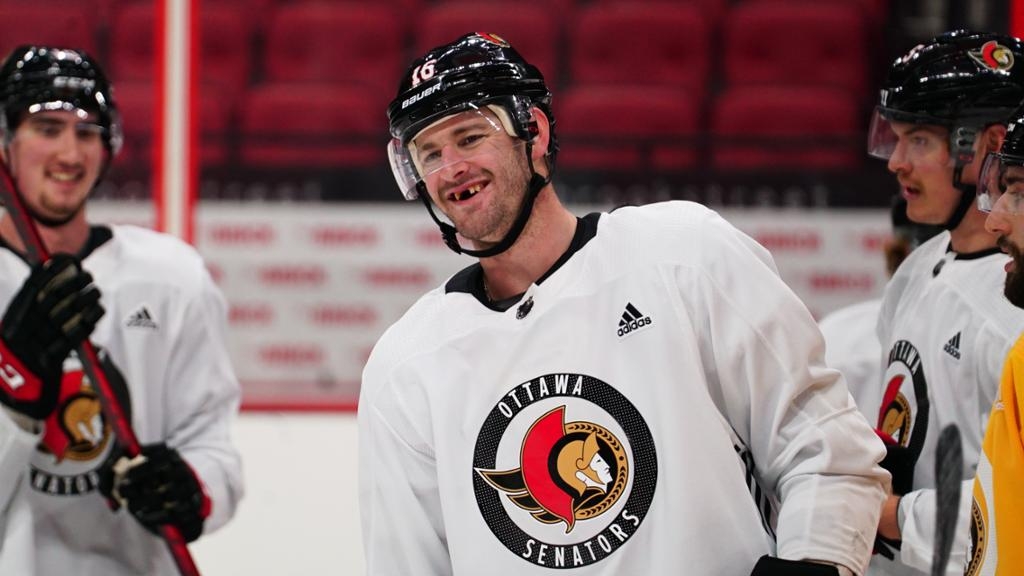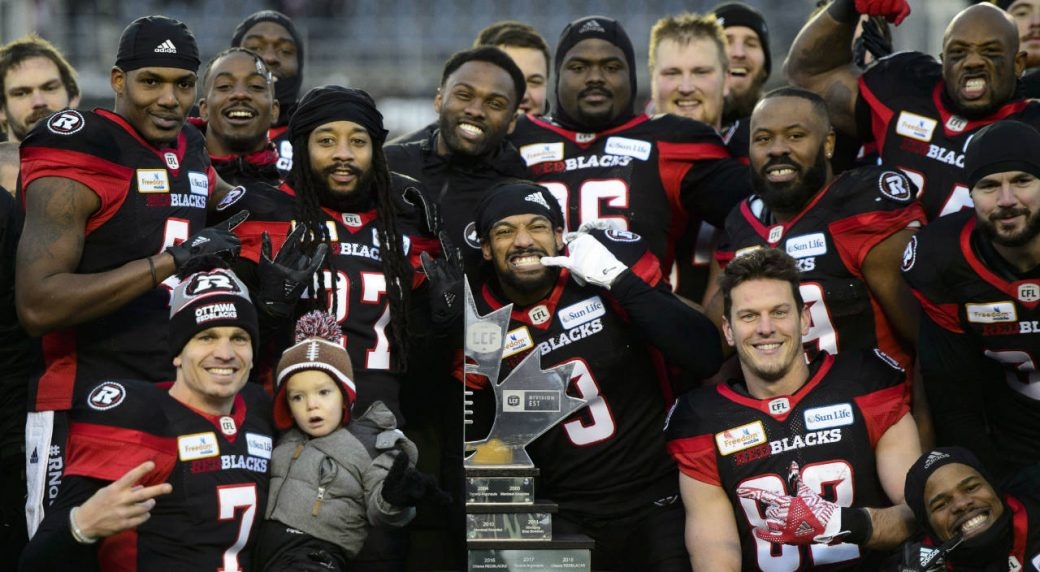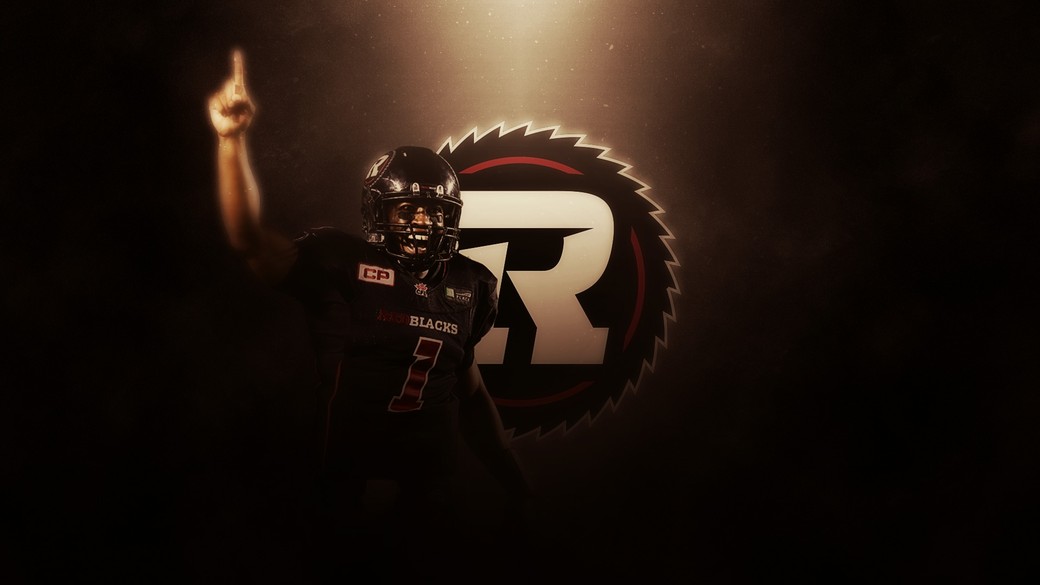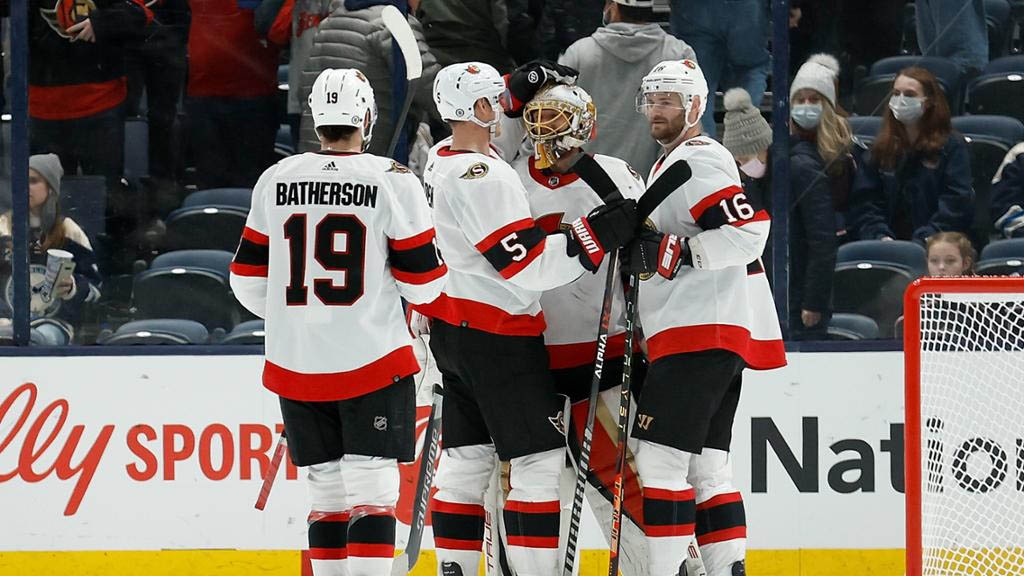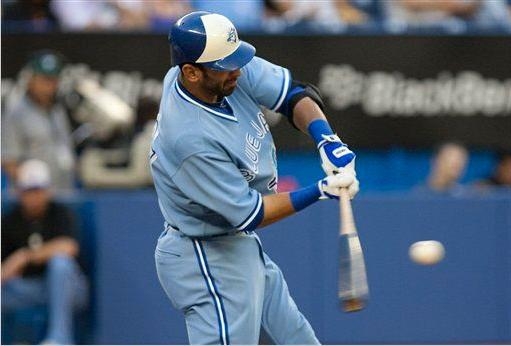
Hope is a Good Thing: The 2011 Toronto Blue Jays
While the Toronto Blue Jays haven’t reached the Major League Baseball playoffs since 1993 – the year they clinched their second consecutive World Series with Joe Carter’s legendary walk-off home run – the team has remained competitive in their 17 straight October-less seasons. Stuck behind two perennial powerhouses, the New York Yankees and the Boston Red Sox, as well as the upstart Tampa Bay Rays, the Jays have the misfortune of playing in baseball’s strongest division, the American League East. In 2010, their 85-77 record placed them 7th in the 14-team American League, but just 4th in the loaded East (they would have also finished 7th in the 16-team National League). While a postseason drought spanning nearly two decades is hardly celebrated in Toronto, there is a justified sense of promise surrounding the Blue Jays as they enter their 35th season.
General manager Alex Anthopolous is entering his second season at the helm of the Blue Jays; his tenure has seen widespread change throughout the entire Toronto organization. His first major move was to trade the face of the franchise, and perhaps the best pitcher in baseball, Roy Halladay, to the Philadelphia Phillies for three prospects in the winter of 2009. The 33-year old Anthopolous would later deal Halladay’s long-time teammate, outfielder Vernon Wells, to the Los Angeles Angels for Juan Rivera and Mike Napoli in January 2011. These moves, while at the expense of two beloved veterans, have spurred an infusion of youth for the rebuilding Blue Jays. In addition to shedding a considerable chunk of payroll, Anthopolous has been lauded for creating a tangible measure of hope for the future.
How soon that hope will come to fruition is the question that lingers over new bench boss John Farrell and his players entering the 2011 season. A playoff berth is unlikely – not with the Sox and Yankees each boasting payrolls in excess of $160 million, and Tampa Bay looking to defend their division championship and make another trip to the World Series. However, it’s not outlandish to think that if certain players have standout seasons, if the pitchers can consistently keep the team in games, and if the club is rewarded with a decent amount of luck, that the Blue Jays could make some noise in the American League this year. Below is a preview of the 2011 Toronto Blue Jays, Canada’s baseball team.
ROSTER REPORT
*Will start season on disabled list; don’t count against 25-man roster
Starting Pitchers: Ricky Romero; Brandon Morrow*; Brett Cecil; Kyle Drabek; Jesse Litsch; Jo-Jo Reyes
Injuries will test the depth of the Jays’ pitching right off the bat. Brandon Morrow, slated to be the #2 starter, will start the year on the 15-day disabled list with inflammation in his right elbow. Ricky Romero has been tabbed as the ace following the December trade that sent former #1 Shaun Marcum to Milwaukee. Heralded youngster Kyle Drabek (the centrepiece of the Halladay trade), will assume a larger role with Morrow sidelined, while Brett Cecil, Jesse Litsch and (for now) Jo-Jo Reyes round out the rotation.
Morrow was dominant at times last season; his best outing came on August 8th against the Rays, when he registered 17 strikeouts and took a no-hitter into the 9th inning. If he can build off the success of his career year – he’s won only 18 games in four years in the majors – the Jays may have a credible frontline starter on their hands. The same goes for Romero, who posted double-digit win totals in each of his first two MLB seasons. The onus will be on Cecil and the oft-injured Litsch to establish themselves as reliable members of the rotation, for the precocious Drabek to prove he can survive and thrive in the bigs, and for Reyes to provide depth as an injury replacement and spot starter. With no Jays starter older than 26, this season will be about a young pitching staff continuing to progress, in the hopes that they mature into a group ready to take over the AL East within the next few years.
Relief Pitchers: Octavio Dotel*; Frank Francisco*; Jon Rauch; Jason Frasor; Shawn Camp; Casey Janssen; Mark Rzepczynski; David Purcey; Carlos Villanueva
In the wake of former closer Kevin Gregg’s departure via free agency, the Jays pursued several stopgap solutions, signing journeyman Octavio Dotel and trading catcher Mike Napoli (acquired in the Wells trade) to Texas for Frank Francisco. Alas, both potential Gregg replacements will start the year on the DL, leaving free agent signing Jon Rauch to man the 9th inning for the opening weeks. The rest of the bullpen will be filled by holdovers from previous years (Frasor, Camp, Janssen), a former Toronto starter (Rzepczynski), and a mix of youngsters and vets trying to stick in the majors (Purcey, Villanueva, as well as projected minor leaguers Robert Ray, Scott Richmond and Josh Roenicke).
While the Jays will have several options in the bullpen at the end of close games, none of Dotel, Francisco or Rauch inspire the same confidence of Gregg or another top-flight closer. Toronto’s relievers struggled at times last season, and losing mainstays Scott Downs and Brian Tallet in free agency will sting pitching coach Bruce Walton. Frasor, needing 42 appearances to become the Jays’ leader in all-time games pitched, is a reliable set-up man, while Camp and Janssen are proven commodities that can work multiple innings in the middle of games. Purcey and Rzepczynski are both southpaws that will provide depth, as will the right-throwing Villanueva – if they’re around following the returns of Dotel and Francisco. Ultimately, the Jays will only succeed if the bullpen can retire runners and avoid blowing leads. They don’t have to be world-beaters; they just have to be consistent.
Catchers: JP Arencibia; Jose Molina
The Jays` brass felt that 25-year old JP Arencibia did enough in his 11 major league games last season (he batted just .143 in 35 at-bats, compared to .301 for Toronto’s AAA affiliate in Las Vegas) to earn the starting job out of spring training, after former starter John Buck signed with Florida in November. 35-year old Jose Molina was retained as the backup – not much is expected from him offensively (.246 with 12 RBIs in 2010), but he’ll be a steady hand in the field and play an important role in mentoring Toronto’s young pitching corps, not to mention Arencibia.
Unlike last season, when Buck appeared in 118 games and Molina just 57, expect Farrell to platoon his two catchers as Arencibia acclimates to full-time life in the majors. Molina served as Brandon Morrow’s personal catcher last season, and he’s also expected to play on days when Drabek and Reyes are slated to pitch. Minor leaguer Brian Jeroloman stood out in New Hampshire (AA) last season; he’ll be the first call-up in the event of an injury. 22-year old Travis D’Arnaud, acquired along with Drabek in the Halladay trade, can hit for power and average; he’ll be groomed as a future major leaguer just as Arencibia was.
Infielders: Adam Lind (1B); Aaron Hill (2B); Yunel Escobar (SS); John McDonald (2B/SS); Mike McCoy (2B/SS); Edwin Encarnacion (3B); Jayson Nix (3B)
In the absence of a natural first baseman (Lyle Overbay signed with the Pittsburgh
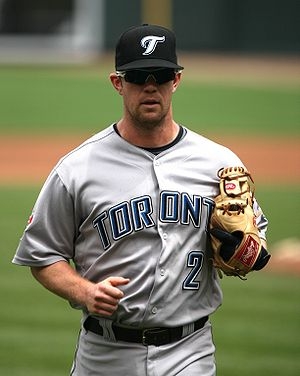
Pirates during the offseason), Adam Lind will make the switch from designated hitter to everyday fielder. After a standout 2009 campaign in which he batted .305, hit 35 home runs and received a few AL MVP votes, Lind crashed back to earth in 2010, batting just .237, hitting 23 homers and striking out 144 times (compared to 110 in ’09). The Jays have faith in Lind to rebound this season at the plate, even with his added defensive responsibility?
Much like Lind, second baseman Aaron Hill enjoyed a remarkable 2009 season (batting .286, 36 homers, 108 RBIs), which he capped off by winning the AL Comeback Player of the Year Award (following a devastating concussion he suffered in 2008). Also like Lind, Hill’s performance plummeted in 2010 – he hit.205 while reaching base in just 27% of his plate appearances. A bounce-back year from Hill will be integral to the club’s success.
Yunel Escobar will open his first full season with the Jays at shortstop – he’s a younger version of Alex Gonzalez, the man he was traded for and replaced at short last July. In what’s becoming a recurring theme among the starting infielders, Escobar’s production slipped after a standout 2009 season – he hit .256 (down from .299) and hit just four homers (down from 14), though his play began to improve in mid-summer after a slow start with Atlanta.
Although he struggled mightily in the field last season, Edwin Encarnacion will retain his spot at third base. A competent power hitter (he batted .244 with 21 home runs in 2010), Encarnacion will look to cut down on the 18 errors he committed last year, tied for worst in the majors among players who played under 100 games. He’ll be backed up by veteran infielder Jayson Nix, acquired from Cleveland just days before the start of the regular season. Ballyhooed prospect Brett Lawrie, acquired in the Marcum trade, may get a shot at third later in the season if he fares well in the minors.
While most teams carry no more than one undersized, light-hitting, slick-fielding middle infielder, the Jays have two: John McDonald and Mike McCoy. Neither is expected to contribute much at the plate – McDonald hit .250 in 63 games last year, while McCoy hit .195 in 46 games (though he batted .310 in 53 appearances with AAA Las Vegas). Despite their limitations on offense, both have value in the field and can play pretty much every position (McCoy played second, short, third, and all three outfield spots last year).
Outfielders: Travis Snider (LF); Rajai Davis (CF); Jose Bautista (RF); Corey Patterson; Juan Rivera (OF/DH)

The trickle-down effect of the Vernon Wells trade will open up a starting spot for promising 23-year-old Travis Snider in left field. Over the past three years, Snider has played just over a season’s worth of games in between call-ups to Toronto, submitting a .255 career batting average and belting 25 total home runs. At 6’0, 235 pounds, he’s shown a considerable amount of power in the minors, and it’s finally time for Snider to make the leap from intriguing prospect to impact major leaguer. His prowess at the plate will go a long way into determining whether the Jays finish closer to 75 or 85 wins.
While Toronto hit the most homers in the majors last season (257, to second-place Boston’s 211), they also stole the least amount of bases in the American League. They attempted to rectify this with the acquisition of Rajai Davis, who swiped 50 bags with Oakland in 2010. Davis, who will start in centre field and bat leadoff, will have the green light to run every time he reaches base (though he’ll have to improve on a middling .320 on-base percentage).
Jose Bautista enjoyed what was by far the best season of his career in 2010, leading the majors with 54 home runs and registering 100 walks. Bautista’s sudden eruption of power (his previous career high was 16 homers) was nothing short of stunning – whether he can sustain that power this season is the $65 million question (the amount he will make over the next five years). He’ll play exclusively in right, where he’ll showcase his powerful throwing arm, after appearing in five different positions for the Jays in 2010.
Juan Rivera was the lone player retained from the Vernon Wells trade, and while there’s probably no chance he’ll replicate Wells’ offensive numbers, the Jays hope he can improve on the .252 average and 15 home runs he posted last season. A former .300 hitter, Rivera certainly has the ability to make a positive impact at the plate; he’ll be the primary designated hitter because of the club’s confidence in Encarnacion at third base.
The primary outfield reserve will be Corey Patterson, the third-overall draft pick in 1998 who never realized his full potential. A starter for the majority of his career, he’ll be a viable backup for each of Snider, Davis and Rivera, and he’ll be used in late-game situations as a pinch runner. Former All-Star Scott Podsednik will likely start the year in the minors, but will see some time in Toronto. A former .300 hitter and a player who once stole 70 bases, it’s unclear if Podsednik will be the same following a foot injury he suffered last September.
DIVISION ANALYSIS
A look at the final standings in the AL East over the past five seasons shows that Toronto has done an admirable job of sticking with their financially endowed rivals.
The following table demonstrates each AL East team’s performance over the past five seasons, along with their total and average number of wins.
| TEAM | 2006 | 2007 | 2008 | 2009 | 2010 | TOTAL | AVG* |
| NYY | 97 | 94 | 89 | 103# | 95 | 478 | 96 |
| BOS | 86 | 96# | 95 | 95 | 89 | 461 | 92 |
| TAM | 61 | 66 | 97^ | 84 | 96 | 404 | 81 |
| TOR | 87 | 83 | 86 | 75 | 85 | 416 | 83 |
| BAL | 70 | 69 | 68 | 64 | 66 | 337 | 67 |
Rounded to the nearest full number.
# Won the World Series
^Advanced to the World Series
This data doesn’t account for one crucial piece of information – namely, that the Rays franchise was a complete debacle prior to 2008, and since then, they’ve outperformed both Boston and New York. If we take each team’s three best seasons since 2006, we get a much more accurate representation of the hierarchy in the AL East:
| TEAM | 1ST | 2ND | 3rd | TOTAL | AVG* |
| NYY | 103 | 97 | 95 | 295 | 98 |
| BOS | 96 | 95 | 95 | 286 | 95 |
| TAM | 97 | 96 | 84 | 277 | 92 |
| TOR | 87 | 86 | 85 | 258 | 86 |
| BAL | 70 | 69 | 68 | 207 | 69 |
By examining the data from both tables, we can come to a few conclusions:

- The New York Yankees are still the class of the AL East, and they should be expected to win at least 95 games
- The Boston Red Sox aren’t far behind the Yankees, but they have a greater potential to bottom out and win just 85-90 games
- The Tampa Bay Rays haven’t been good as long as New York or Boston; they have a fair amount of boom-bust potential (win between 95-100 games, or win only 80-85 games)
- The Toronto Blue Jays have been consistent, save for one down season – they should be expected to win between 83-87 games
- The Baltimore Orioles can’t be counted on to win more than 70 games
Nothing is set in stone, of course – it’s likely that one of the Yankees, Red Sox and Rays will have a down year and win fewer than 90 games. (For that matter, Baltimore could turn its luck around and win half their games, although I don’t see it happening.) What the above conclusions are meant to illustrate is that two things will almost certainly have to happen for the Blue Jays to have any hope of reaching the playoffs:
- At least two of the Yankees, Red Sox and Rays will have to win fewer than 90 games. (Since all three division winners make the playoffs, as well as one wild card team, Toronto’s best hope is finishing higher than all other non-division winners and claiming the wild card spot.)
- The Jays will have to improve on their recent history and win over 90 games.
SCHEDULE ANALYSIS
So how can the Jays get those wins? By analyzing the breakdown of Toronto’s 2011 schedule, as well as their success against each of their 2010 opponents, we can estimate how many games John Farrell’s crew will need to win against each team and division in order to have a legitimate shot at making the postseason.
Toronto plays each of their AL East rivals 18 times – nine at home and nine on the road. Last season, they played the five teams in the AL Central Division a total of 41 times, and the four teams in the AL West Division 31 times – this year, they’ll play 33 games against the Central (17 at home, 16 on the road) and 39 games against the West (19 at home, 20 on the road). They’ll also play six three-game series against teams from the National League, for a total of 18 inter-league games (nine at home, nine on the road). All of that adds up to 162 games in 181 days.
In 2010, Toronto finished with a record of 85-77. Here is a breakdown of how many games they won against each division/league:
- Record vs AL East: 39-33 (22-14 at home; 17-19 on the road)
- Vs Baltimore: 15-3 (9-0 at home; 6-3 on the road)
- Vs Boston: 6-12 (2-7 at home; 4-5 on the road)
- Vs New York: 10-8 (6-3 at home; 4-5 on the road)
- Vs Tampa Bay: 8-10 (5-4 at home; 3-6 on the road)
- Record vs AL Central: 22-19 (10-9 at home; 12-10 on the road)
- Record vs AL West: 17-14 (10-7 at home; 7-7 on the road)
- Record vs National League: 7-11 (4-5 at home; 3-6 on the road)
Generally, the Jays did very well for themselves, posting a combined 39-33 record against the AL Central and West, as well as a 39-33 record against their own division. Their performance against the National League leaves something to be desired – only one American League team fared worse in 2010 against the NL (Cleveland, at 5-13; Baltimore and Tampa Bay also posted 7-11 records).
If we set 90 wins as the absolute minimum to challenge for a playoff spot, then the Jays will probably have to do the following to reach that benchmark:
- Continue their domination against Baltimore, and aim for a .500 record against Boston, New York and Tampa Bay. They were 18-18 against the Yankees and Rays last season, but just 6-12 against the Red Sox, and only 2-7 in Boston (at Fenway Park).
- Improve on their already above-average record against the AL Central and West. The Jays were 6-3 against 2010 Central champ Minnesota and 7-3 against 2010 West champ Texas, figures that will be hard to replicate. Series against weaker squads such as Kansas City, Seattle and Cleveland will be crucial towards determining Toronto’s final win total.
- Win their interleague games – period. The Jays will play five straight three-game series against National League teams from mid-June to early July (at Cincinnati, at Atlanta, at St. Louis, home to Pittsburgh, home to Philadelphia; they also host Houston in May). To have any shot at challenging the top dogs in the AL East, it’s imperative that Toronto earn at least a split with the National League, and preferably win 10 games or more.
So what will it take for the Toronto Blue Jays to make the MLB playoffs in 2011? To start off, consistency and poise from the starting rotation. Reliable performances from the bullpen. Bounce-back seasons at the plate for Adam Lind and Aaron Hill. Jose Bautista proving he wasn’t a one-year wonder. Travis Snider, Kyle Drabek and JP Arencibia making an impact in the majors. A stronger showing against the National League. More wins at Fenway Park. Down seasons from the Yankees, Red Sox and/or Rays. The ability to avoid the injury bug. A sizable amount of luck.
In other words, it probably won’t happen – not this season, anyway. The Yankees will feature the highest-paid 25-man roster in baseball. The Red Sox added Carl Crawford, boast the American League’s deepest rotation and reinforced their bullpen. The Rays retain Evan Longoria, BJ Upton and 2010 Cy Young Award runner-up David Price. The Jays could finish ahead of each of baseball’s other 26 teams, and if they can’t beat any of their AL East rivals, it wouldn’t mean a thing. If the Blue Jays played in, say, Oakland, or St. Louis, the playoff picture would shine considerably brighter. As it is, geography – not blown saves or stranded base-runners – may be the club’s Achilles heel.
And what happens if the Jays somehow make the postseason? Like Oakland A’s GM Billy Beane of Moneyball fame once inferred, it’s pretty much a total crapshoot. A team could parlay its momentum from September into a deep playoff run, or it could be wiped out in three games by a true contender. That’s the beauty of baseball season – absolutely anything can happen. And if anything doesn’t happen, well, we can always cheer for Roy Halladay in the World Series.

